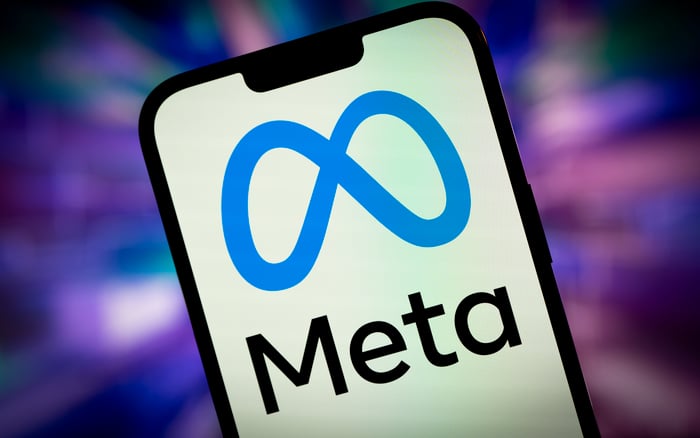Duolingo’s Stock Surges Amid Market Volatility in 2025
The S&P 500 (SNPINDEX: ^GSPC) has experienced a turbulent start in 2025. Following President Donald Trump’s announcement of “Liberation Day” tariffs on goods from various countries in early April, the index fell to a low of 19% below its peak. However, it has since recovered slightly, now down only about 8% from its high and 4% year-to-date.
Notably, some companies’ stocks have remained resilient during this period. Duolingo (NASDAQ: DUOL) stands out as it operates the leading digital language education platform, which is unaffected by tariffs applicable to imported goods. As a result, Duolingo has achieved a remarkable 54% stock price increase in 2025 thus far.
Impressive User Growth
Duolingo has designed an engaging mobile app that delivers a powerful learning experience accessible to anyone with a smartphone. This strategy resonates well with users. By the end of the first quarter, the platform recorded 130.2 million monthly active users (MAU), marking a 33% increase from the previous year, with an accelerated growth rate compared to 32% in the fourth quarter.
The company’s revenue model is based on two streams: offering ads to free users and providing paid subscription options for additional features. In Q1, Duolingo reported a record 10.3 million paying subscribers, a 40% year-over-year increase. The data indicates that users see genuine value in these premium features, as the growth in subscribers outpaces the overall active user growth.
Artificial Intelligence (AI) plays a vital role in enhancing this value. Duolingo’s highest-tier subscription, Max, includes three noteworthy AI features:
- Roleplay: An AI chatbot to assist users in practicing conversational skills in their chosen language.
- Explain My Answer: This tool offers personalized feedback based on users’ mistakes in each lesson.
- Video Call: A digital avatar named Lily helps users practice speaking skills, engaging in topics while recalling previous interactions for a tailored experience.
Duolingo aims to deliver a learning experience comparable to studying with a human tutor. The Max subscription only launched in 2023, yet by the end of Q1, it accounted for 7% of the total subscriber base, a rise from 5% three months prior.
Revenue Forecast Raised for 2025
In the first quarter, Duolingo generated $230.7 million in revenue, representing a 38% year-over-year growth, comfortably exceeding the high end of management’s forecast of $223.5 million.
In light of this strong performance, management has revised its revenue expectations for the year, now anticipating up to $996 million (at the high end of the guidance range), an increase from the previous $978.5 million estimate. This upward revision has contributed to a 25% stock price increase since the release of the Q1 report.
Another factor driving stock performance is Duolingo’s improving profitability. The company reported total operating expenses of $140.5 million in Q1, up 32% year-over-year; however, expenses grew at a slower rate than revenue, leading to a 30% increase in net income to $35.1 million.
Duolingo primarily relies on organic social media campaigns for marketing, resulting in low user acquisition costs. During Q1, marketing represented the smallest operating expense at $26.6 million, allowing greater investment in research and development for new features that enhance monetization opportunities.
Is It Too Late to Buy Duolingo Stock?
Currently, Duolingo’s business is thriving. The digital subscription model remains unaffected by tariffs, and the company operates in 194 countries, providing diverse revenue streams that may buffer against economic impacts from global trade tensions. However, this does not automatically make Duolingo stock a viable investment option.
The stock has soared by 54% this year and 151% over the past 12 months, leading to a high valuation. Duolingo trades at a price-to-sales (P/S) ratio of 29.5, marking one of the highest levels since its public listing in 2021. This ratio also reflects an 87% premium compared to the historical average of 15.8.

DUOL PS Ratio data by YCharts.
Additionally, Duolingo’s price-to-earnings (P/E) ratio stands at an extraordinary 248, substantially higher than the S&P 500’s P/E ratio of 22.5.
Nonetheless, with rapid growth, the company’s valuation appears somewhat justified when considering its future earnings potential. According to Wall Street estimates (as per Yahoo! Finance), Duolingo is expected to achieve earnings of $6.05 per share in 2025 and $7.93 per share in 2026, resulting in forward P/E ratios of 83 and 63, respectively.

DUOL PE Ratio data by YCharts.
In summary, while Duolingo stock is still expensive on both absolute and forward bases, investors should proceed with caution given its prevailing elevated valuation.
# Duolingo: Is It the Right Investment for You?
Currently, Duolingo may not be an ideal investment for those with a short-term outlook. Nevertheless, long-term investors who plan to hold the stock for at least five years, or longer, could potentially benefit as catalysts such as AI and the Max subscription develop.
Should You Invest $1,000 in Duolingo Now?
Before purchasing stock in Duolingo, it’s essential to evaluate this:
The Motley Fool Stock Advisor analyst team has identified their picks for the 10 best stocks to invest in right now, and Duolingo is not included in that list. The stocks that did make the cut are projected to yield significant returns in the upcoming years.
For example, consider Netflix, which was recommended on December 17, 2004. If you had invested $1,000 at that time, it would be worth approximately $614,911 now!*
Similarly, Nvidia was listed on April 15, 2005. An investment of $1,000 back then would now be worth nearly $714,958!*
It’s important to highlight that the Stock Advisor boasts a total average return of 907%, significantly outperforming the 163% return of the S&P 500. This demonstrates the value of considering their latest top picks when investing.
*Stock Advisor returns as of May 5, 2025
Anthony Di Pizio has no position in any of the stocks mentioned. The Motley Fool recommends Duolingo. The Motley Fool has a disclosure policy.
The views and opinions expressed herein are those of the author and do not necessarily reflect those of Nasdaq, Inc.




